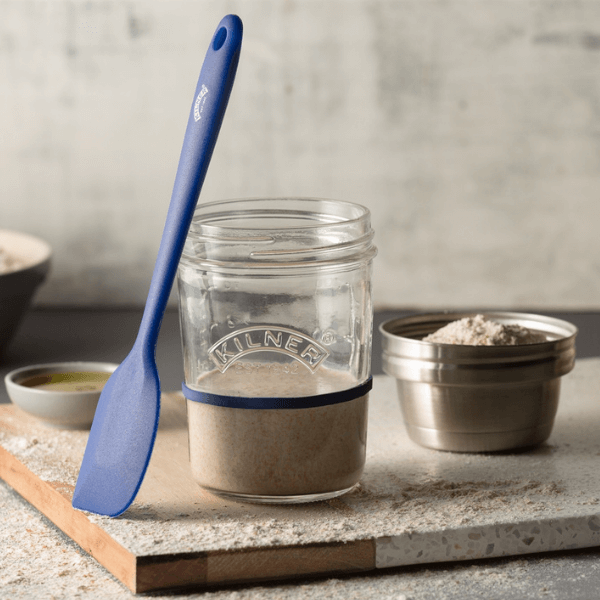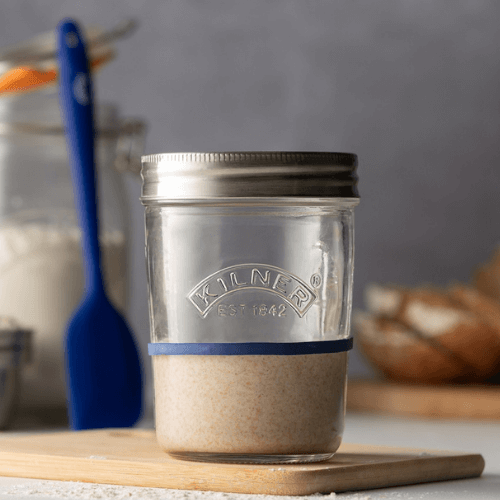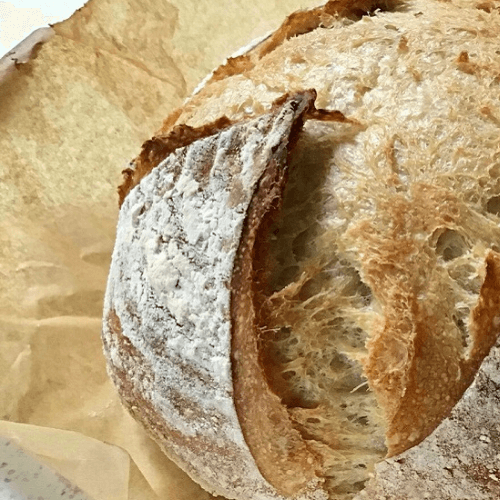

A Guide to Sourdough Bread
You don't have to be a professional baker to know how to make a sourdough starter and sourdough-based foods at home, you just need the right ingredients, instructions, and equipment.
So, what is sourdough?
Basically, it is bread made without commercial yeast that is slowly fermented. Instead of yeast, it is made with a live fermented culture called the sourdough starter, which is what makes the bread rise.
The popularity of sourdough bread continues to grow because it's a healthier alternative to supermarket loaves, and it's easy for the body to digest. Plus, it tastes delicious!
Before you can make any sourdough-based foods, you will need to pre-ferment a mixture of flour and water, also known as the sourdough starter. Use the Kilner® Sourdough Starter Set to make your sourdough starter.


Before you can make all your favourite sourdough-based foods you will need to make the sourdough starter. Making your own sourdough starter is very simple to do with the the Kilner® Sourdough Starter Set and will be ready to use in 7-10 days.
Sourdough FAQs
Can I use any type of flour?
It is recommended to use whole wheat flour as the additional nutrients in the flour helps to speed up the process. You can use white (sifted) flour but your starter may take longer to be ready.
Can I use tap water?
It is recommended to use filtered water or bottled water, where possible, as it's free from chlorine. The chlorine can cause the starter to fail.
What is ‘feeding’?
Feeding the starter is simply providing the existing starter with fresh flour and water to keep it healthy and active.
How do I know if my starter is ‘hungry’?
Through rising and fall marks of the starter on the walls of the glass jar. Once you feed the starter, ensure you mark the level of the starter with a rubber band, as that'll be easier to track the fermenting process.
Can I use the excess starter which I discard for other foods?
You can use it for many different foods such as pancakes, naan bread, banana bread, waffles, pizza, and so on.
What if my starter is showing no signs of rising and falling?
Keep going, keep feeding the starter every day. If, after 2-3 days, there are still no signs, then start feeding it twice a day.
Can I put my starter to sleep?
Yes, you can. Feed it, screw on the metal lid tightly, let it stand at room temperature for 2-3 hours then place inside the fridge. A starter stored in the fridge will require feeding once a week. Two days before you plan to use the starter, take it out of the fridge, feed it and keep it in a warm place. Once it shows signs of rising, then it is ready to be used.
What happens if my starter does not pass the float test?
If the starter does not float, it’ll just require a few more days. Continue to feed once or twice a day, until you see the consistent, rise and fall, do the float test again. If you need to take a break, keep the starter in the fridge for up to 7 days and try it again. The starter can take up to 10 days depending on the time of year or the temperature in your kitchen. Do not put your starter on a direct heat source but it can be placed near a cooking area or in a dishwasher when the cycle is finished and clear of dishes.


